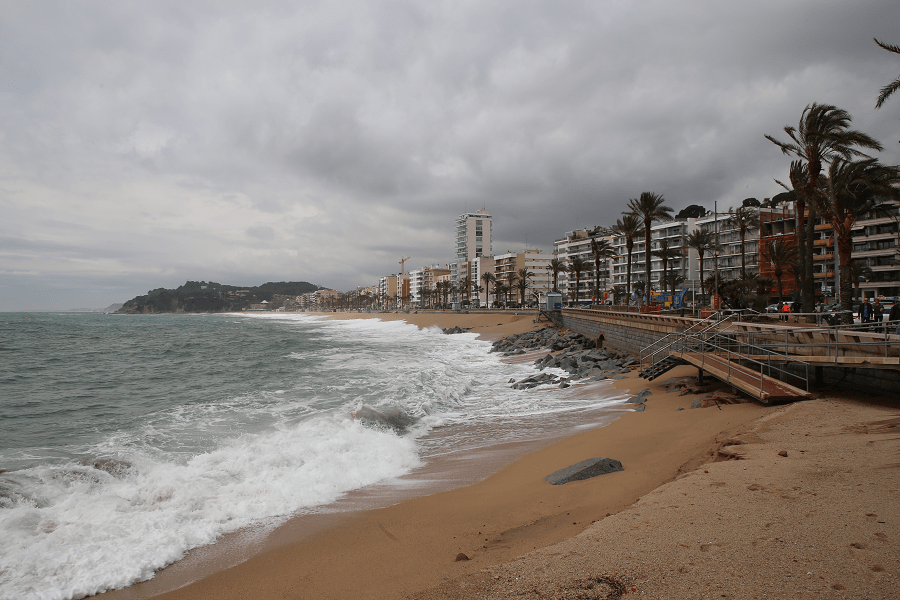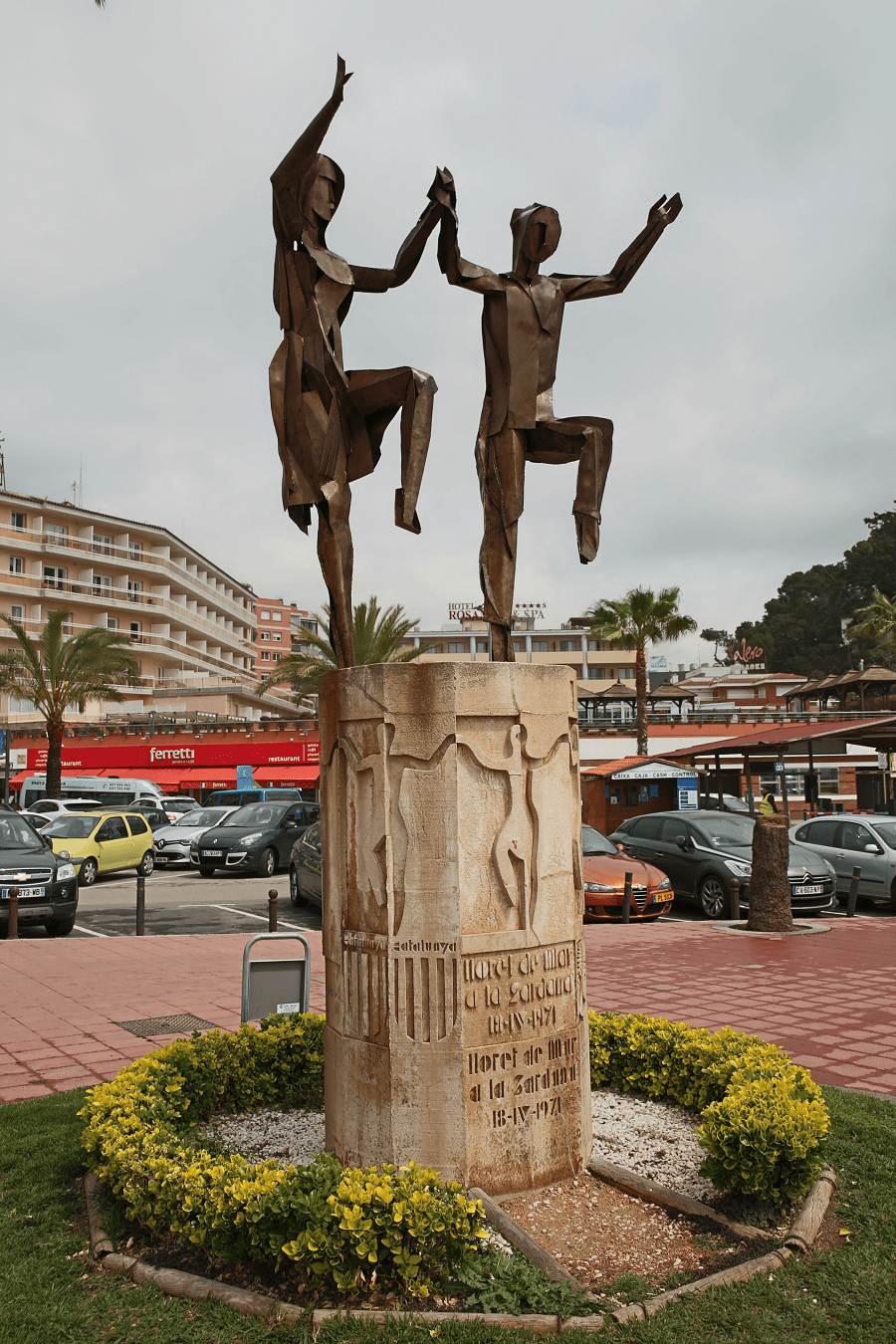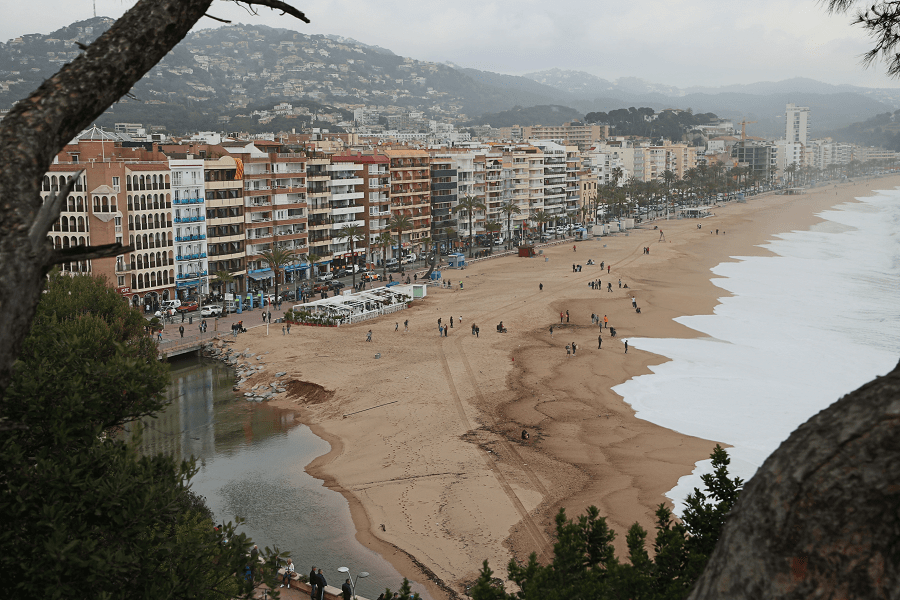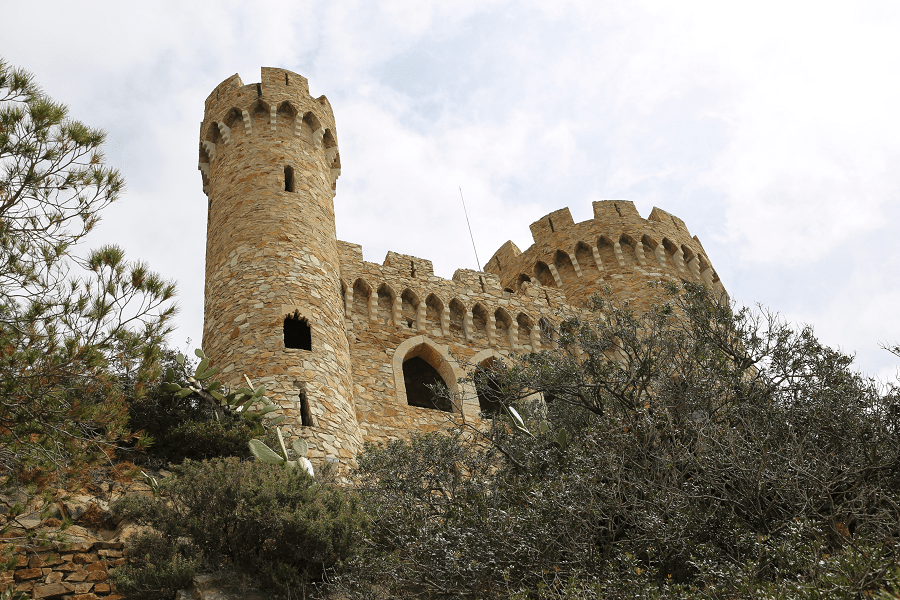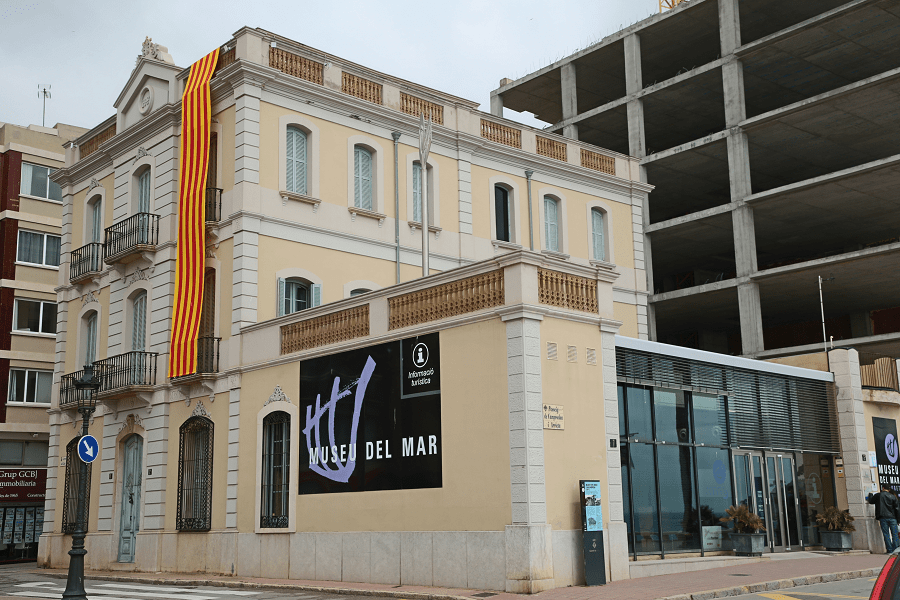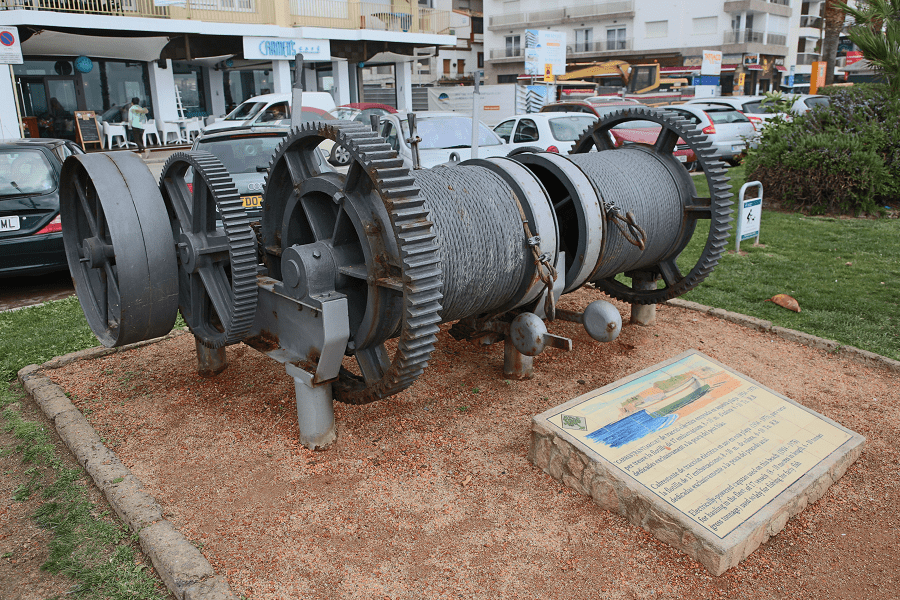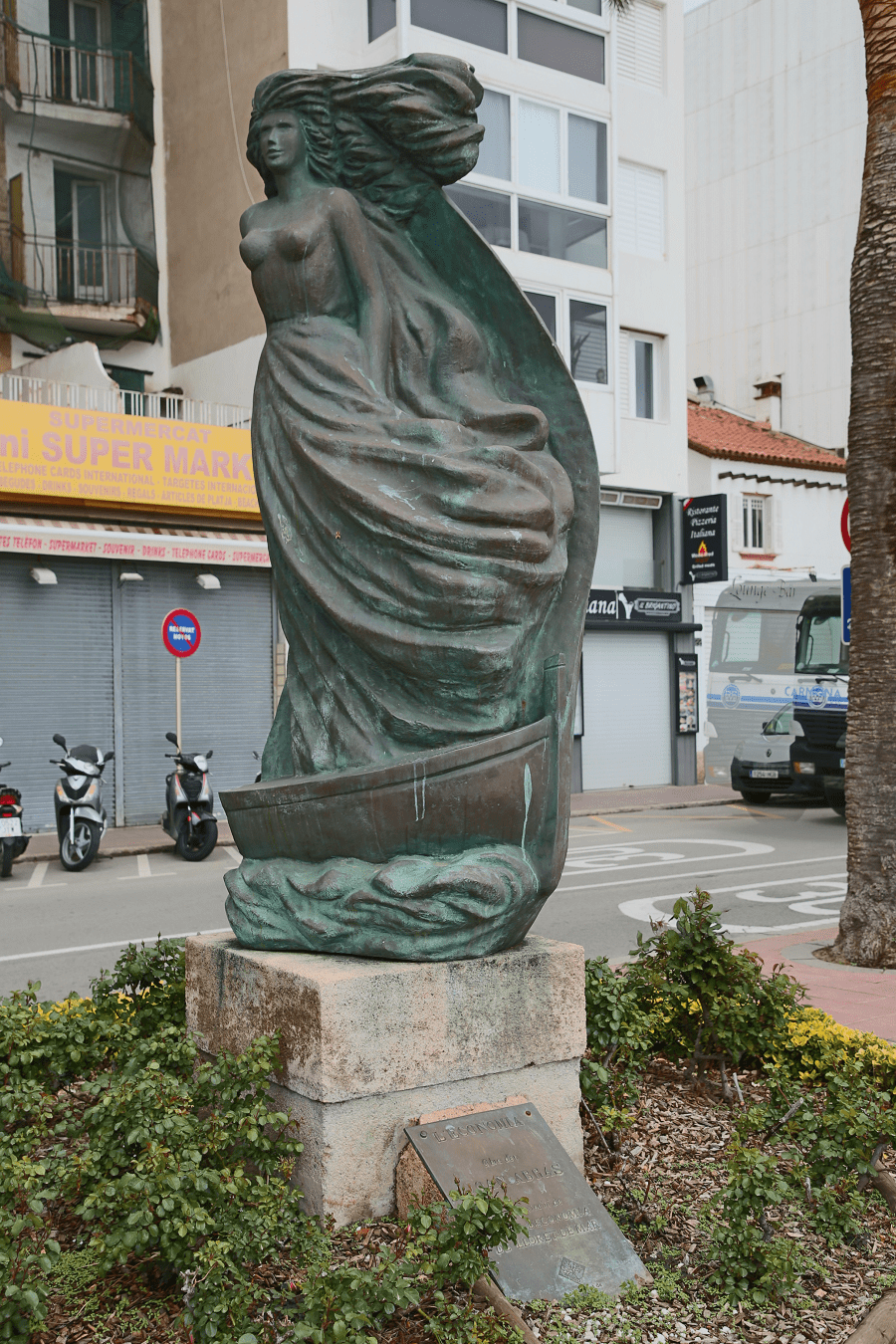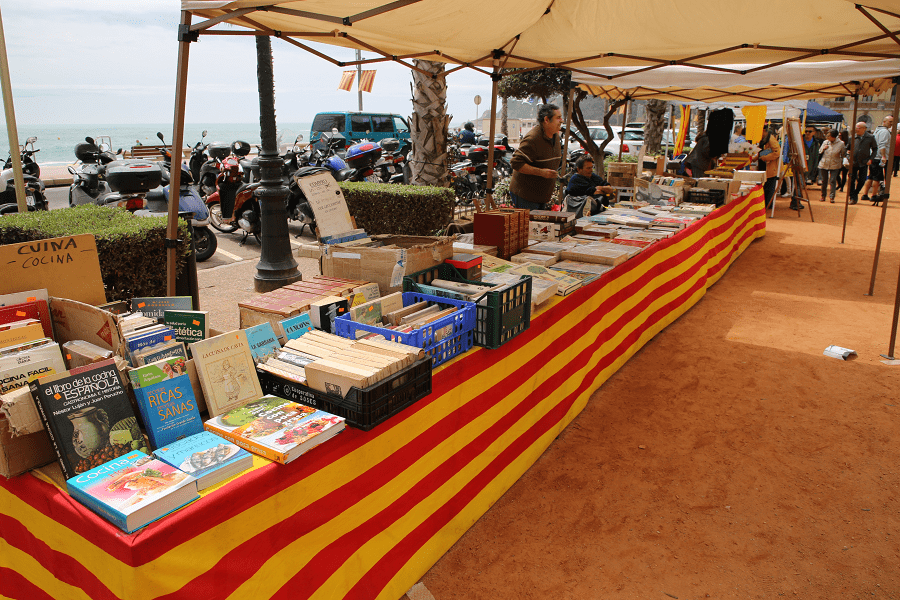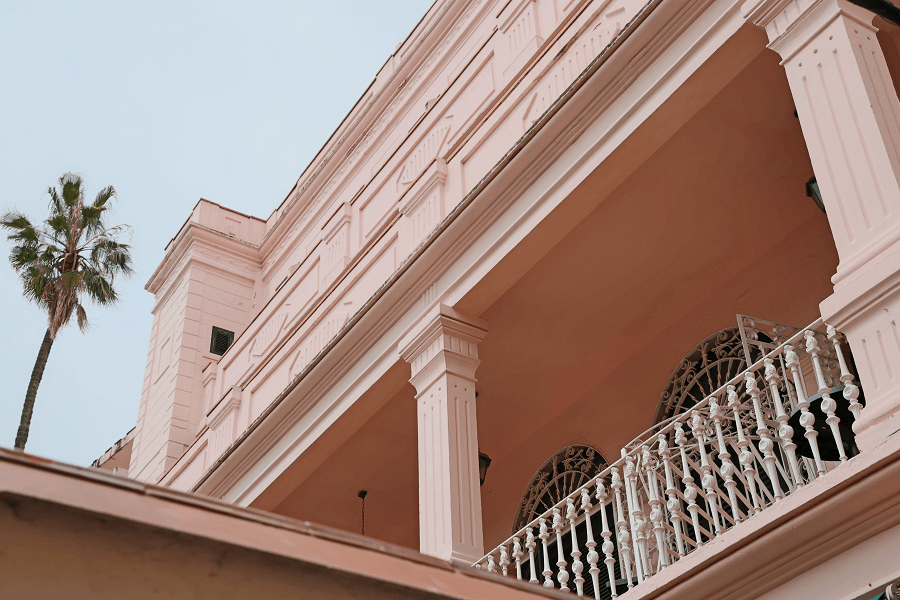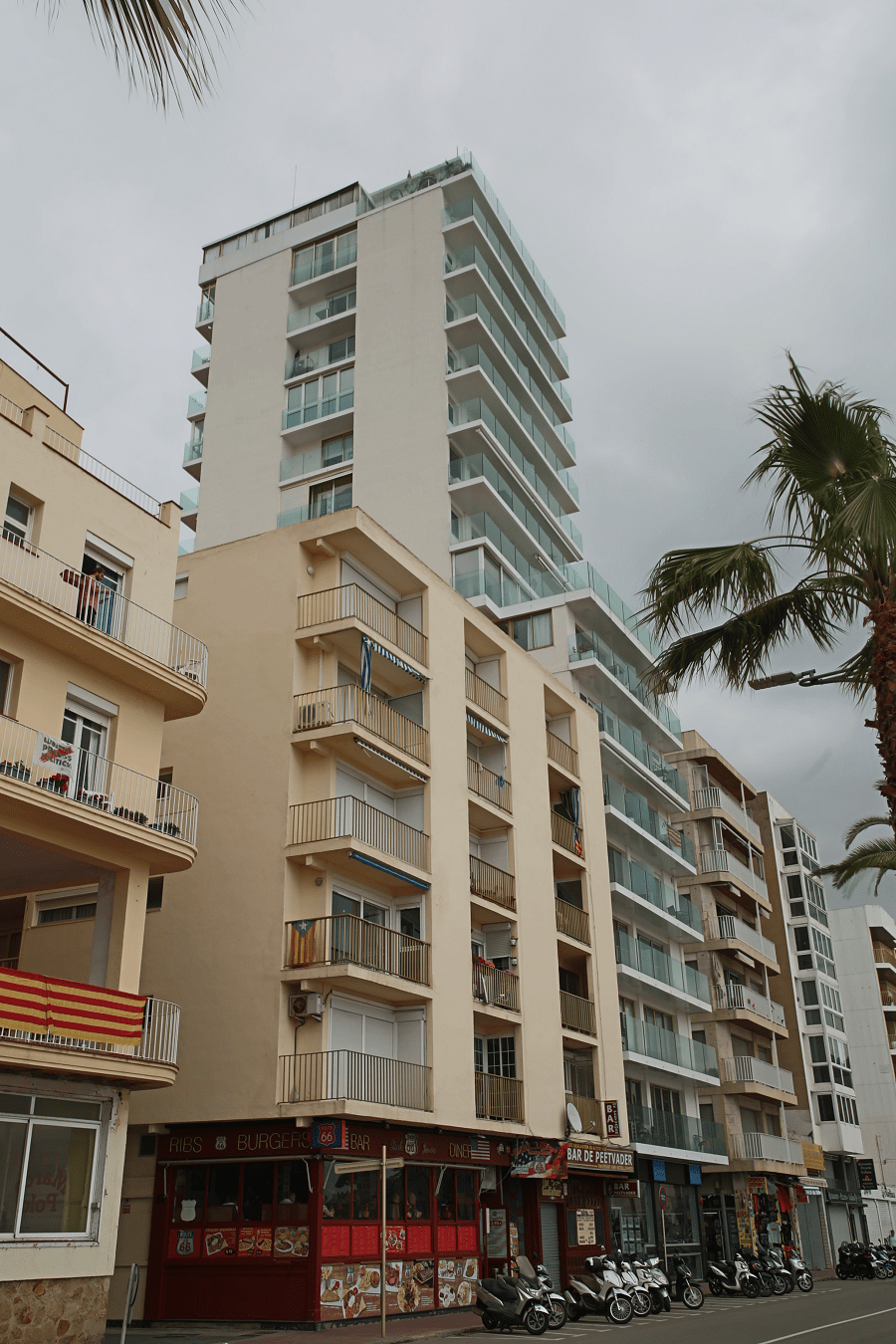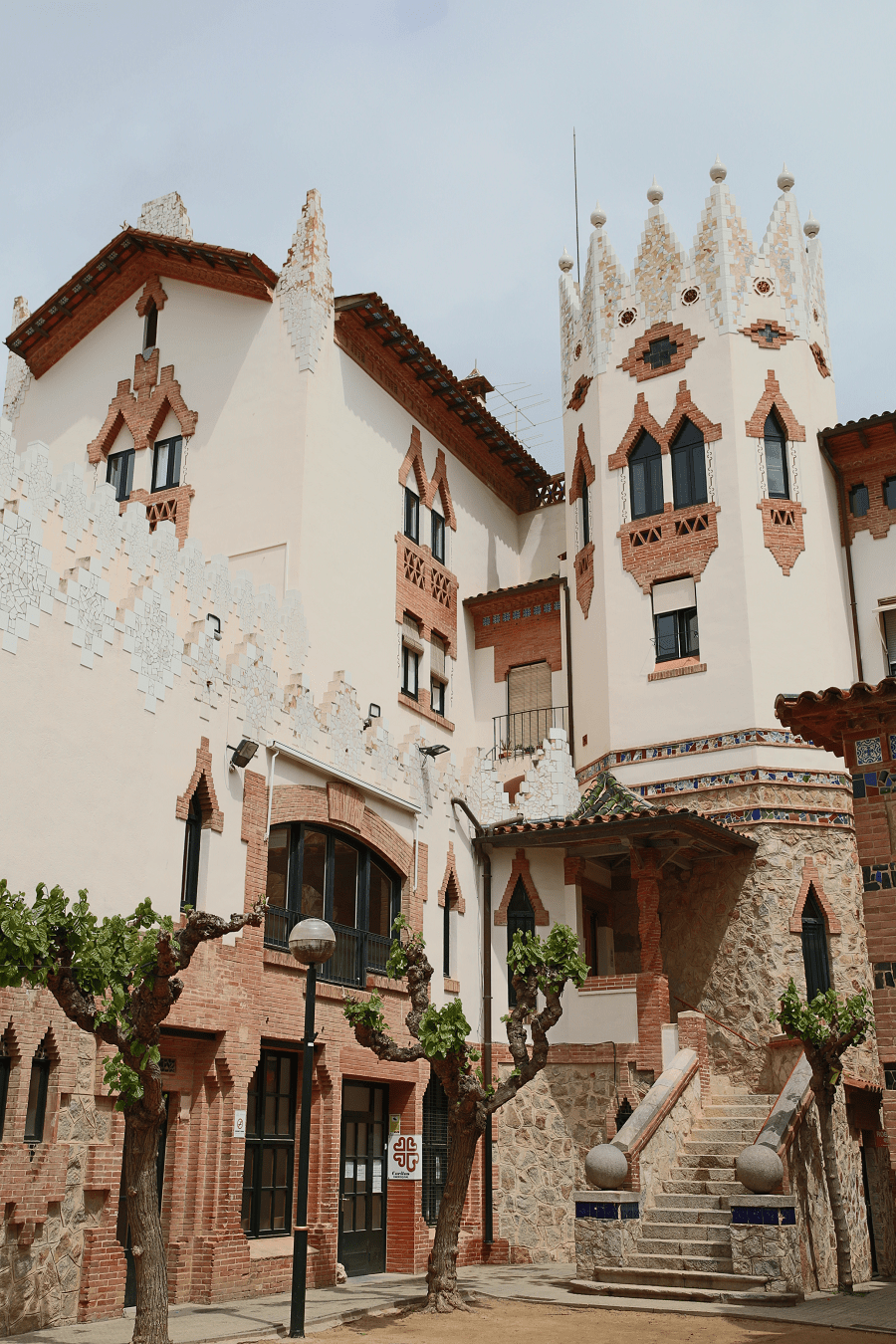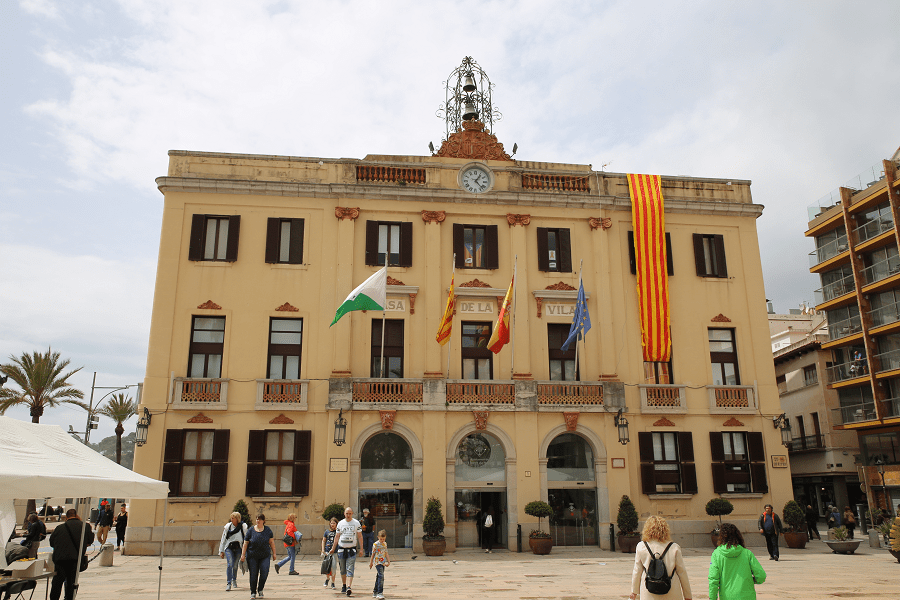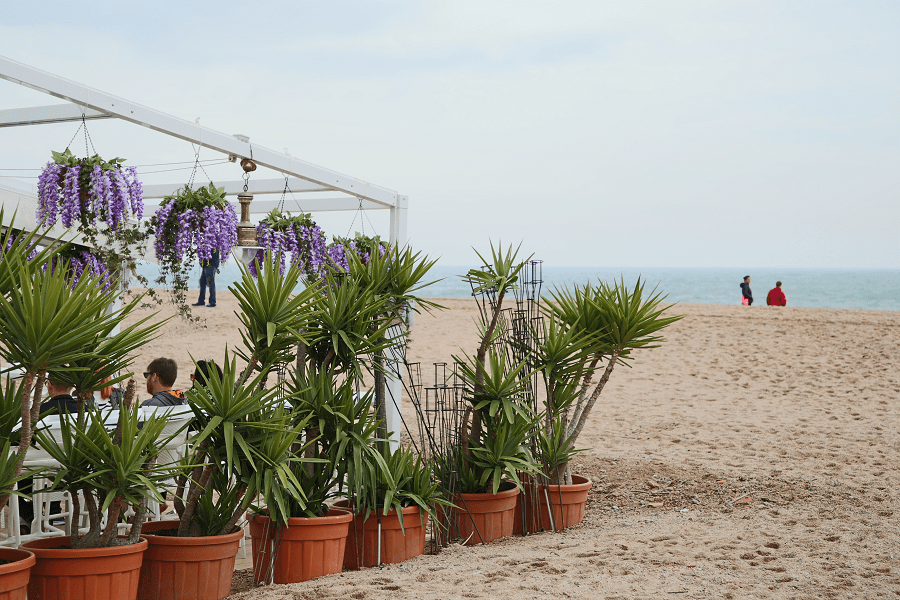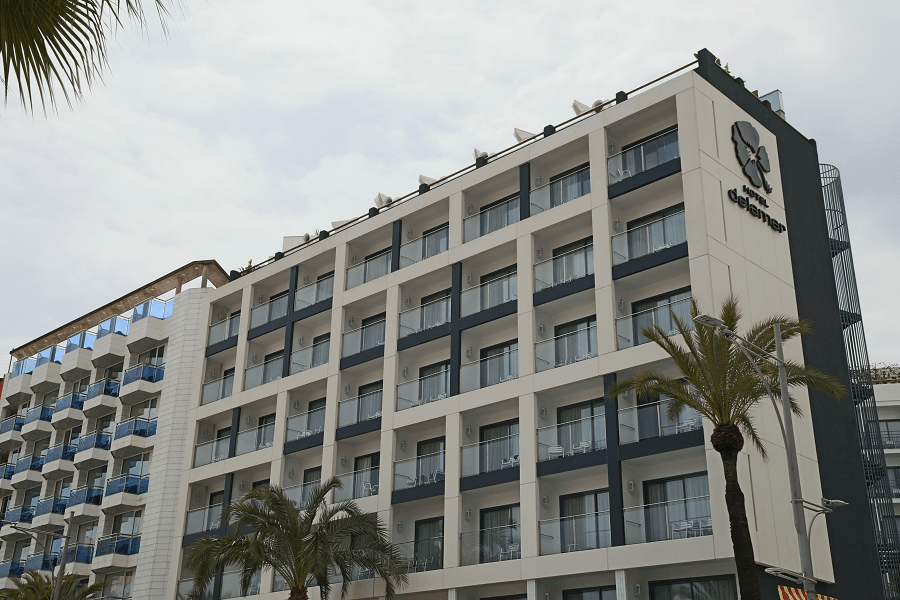Lloret de Mar (cat. Lloret de Mar) is a resort city in Spain, the Selva region, south of the Costa Brava, Catalonia. Judicially, it is part of Blanes and its electoral demarcation is Santa Coloma de Farners. A pioneer of European tourism in the 1950s, Lloret has become one of the most important tourist destinations. It is a meeting point of cultures and traditions, but maintains its cultural identity. Apart from traditions that remain unchanged with the passage of time, Lloret de Mar, as a cosmopolitan and leading city that it is, incorporated new ones.
It’s a popular part of the Costa Brava of the Mediterranean resorts of Spain.
Together with Blanes and Tossa de Mar, they form a territorial and tourist unit that has more than 80,000 residents and welcomes over 1,500,000 tourists a year.
Toponymy
The Romans called Lauretum the place we know today as Lloret de Mar because of the number of laurels that must have grown there at that time. From this period there are the remains of Roman sepulcher dating back to the 2nd century AD and the Roman brickyard of Fenals.
Lloret is mentioned for the first time in a written text in 966 as Loredo, in a donation of the valley of Tossa to the monastery of Ripoll, where in the description of borders it is said that to the west, it borders with LOREDO, sive in rivo de Canellas. It was part of the County of Girona and changed hands several times until it joined the barony of Llagostera.
Geography
The municipality of Lloret de Mar has a surface of 48.9 km2, with 9 km of coastline and 27 km2 of forest. It borders with Vidreres and Maçanet to the west, Mediterranean Sea to the east, Tossa de Mar to the north and Blanes to the south.
Climate
Lloret de Mar has a Mediterranean coastal climate, with temperatures always much softer due to the moderating thermal effect of the sea. However, it must be borne in mind that the Mediterranean is a warm sea all year round, so the effect of softening the temperatures characterizes it and is more evident in winter than in summer. The dry summer season of this climate usually lasts for three months and most of the rainfall is concentrated in the autumn.
History
The first settlers of Lloret were the indigets, one of the tribes of the Iberians who used to inhabit the current Catalonia. There are archeological sites from this period in Montbarbat, Puig de Castellet and Turó Rodó.
The site of Montbarbat is on top of a mountain with the same name. It was inhabited between the 6th century BC and the 9th century AD. In the various excavations carried out on the site remains of Iberian and Emporitan ceramics were found, as well as, Iberian and Punic amphoras, bronze materials and agricultural iron tools.
The site of the Puig de Castellet was built in the 3rd century BC and was used as a watchtower to control the coast.
The present town was formed around 15th century beside the beach district. The parochial church of Sant Romà was finished in 1522, inside it stands out the main altarpiece (1545-1549), painted by Pere Serafí.
The 17th and 18th centuries were times of hardship and conflicts, such as the Revolt of the Joseps. See here more history and legends of Lloret de Mar
Lloret de Mar is now one of the most popular resort towns on the Costa Brava, especially among younger travellers. The city has both culture and nature to offer – everything from medieval castles, to informative museums, parks, and beautiful beaches!
Beaches
Lloret de Mar has received four blue flags for the beaches of Lloret, Fenals, Sa Boadella and Santa Cristina.
● Lloret Beach: With a length of more than one and a half kilometers, it is the largest beach in the town from which it receives its name. It is located in the center of Lloret and has a car park that allows you to leave a car a short distance from the beach, it has an accesses and facilities adapted for people with mobility impairments.
● Fenals beach: Fenals is the second beach of Lloret de Mar with an extension of 700 meters. It is located in a bay sheltered from the winds by a massif that separates it from the urban centre and the beach of Lloret. It also has access and facilities adapted for people with mobility difficulties.
● Platja de Santa Cristina: it’s sheltered from the winds by two large hills thanks to which it usually has calm waters.
● Platja de Canyelles: Canyelles is the beach furthest away from the urban centre, it is accessed from the road that leads to Tossa de Mar. It has a similar length as the beach of Santa Cristina. Canyelles is important because it is the only yachting port of Lloret de Mar.
● Treumal beach: The gap between two rocks to the right of Santa Cristina beach allows the access to the Treumal beach.
● Sa Caleta: It is located next to the beach of Lloret and under a castle that has spectacular views.
● Cala Banys: A rocky cove especially recommended for fishing or snorkelling, you can access it by walk from Lloret beach or by car through the Castell of Sant Joan.
● Cala Boadella: Although only 250 meters long it is a beach with a pristine landscape.
Tourism, museums, sights and main attractions
Church of Sant Romà: Gothic church finished in 1522 built as a refuge from attacks from Turkish and Algerian pirates. Large-scale restoration work carried out in the early 20th century with money from the returned Americanos has converted it into a building with Byzantine, Moorish, Renaissance and Modernist influences.
Castle of Sant Joan: Medieval castle from the 11th century used to defend Lloret against any attacks from the sea such as that of the Genovese fleet in 1356 and during England’s war on Spain and France in 1805. The fortress is said to have been operational until the 17th century. Only the castle’s tower remains (restored in 1992) and offers an excellent view of the surrounding area.
Monument to the Fisherman’s Wife: Bronze sculpture found at the end of Lloret beach erected in 1966 to commemorate Lloret de Mar’s Millennium. It is considered to be one of the town’s most emblematic symbols. Legend states that touching the sculpture’s foot while looking out at the horizon will make your wishes come true. Santa Clotilde gardens: Gardens designed in an Italian Renaissance style by Nicolau Rubió i Tuduri. Situated on top of a cliff offering impressive views over the sea.
Modernist cemetery: The modernist cemetery of Lloret de Mar is one of the most important Indiano cemeteries in Catalonia and one of the most representative anywhere in Spain. The essence of Lloret de Mar cemetery can be traced to the arrival of the newly rich Indianos, those who returned to the town after making their fortune in the Americas. Designed by Joaquim Artau i Fàbregas, the main avenue contains a series of dazzling pantheons and hypogea in a highly evocative modernist style.
Iberian settlements at Puig de Castellet: There are three Iberian settlements in Lloret de Mar: Montbarbat, Puig de Castellet and Turó Rodó, dating from as far back as the 4th century BC (Montbarbat) to as late as the 2nd century BC (Turó Rodó). By the time of the 1st century BC, the Iberian world had been swept away due to the expansion of the Roman Empire.
The Iberians, who were the indigenous inhabitants of the Iberian Peninsula, were organised into territorial tribes: Laietani, Cessetani, Ilercavones, Ilergetes, Ausetani and Indigetes. The Indigetes inhabited the Puig de Castellet settlement. This settlement, dating from the 3rd century BC, is situated two kilometres away from Lloret de Mar town centre in a strategic spot with an excellent vantage point overlooking the area stretching from the Tordera estuary to the Lloret coast. It is a small 650 m2 enclosure composed of around six dwellings. The settlement was fortified with a thick wall and defence towers during a turbulent period of history that shook the Mediterranean region from 264 BC to 146 BC: the Punic Wars. The strengthening of the enclosure wall dates back to the 3rd century BC, coinciding with the period of Carthaginian rule. As such, this settlement was active for around 50 years between 250 BC and 200 BC, at which point it was abandoned.
Indiano houses route
Church of Sant Romà: In 2014 restoration work was completed on the Can Font building, the former residence of a family of Indianos, which was the name given to Catalans who emigrated to America at the turn of the 20th century to seek their fortune. Between 1800 and 1840 many of Lloret’s townsfolk set sail for America, many of them children of the town’s poorest families, with the dream of making their fortune in the New World. Two Cuban cities, Havana and Matanzas, were the most common destinations for emigrants, who took on all sorts of jobs there. However, they never lost touch with their home town, one of the Catalan towns that was most influenced by these connections with the Indies. The Indianos were philanthropists and benefactors who contributed to Lloret’s urban transformation. They funded many charity projects, such as the hospital and schools, and took an active part in the modernist reconstruction of the parish church.
Casa Garriga (Maritime Museum): Enric Garriga i Mataró, who emigrated to Cienfuegos (Cuba) and made his fortune with a construction materials firm, had this house built. When he died, his widow purchased the adjacent plot, creating a twin-structured building with a ground floor, two upper floors and a garden on the promenade side.
The totally symmetrical façade features six balconies on the two upper floors, crowned by a pediment and balustrades. Casa Garriga now houses the Maritime Museum, dedicated to showcasing the town’s seafaring past.
Passeig Verdaguer or Passeig de les Palmeres: Promenade with a colonial feel built by the Girona-based architect Martí Sureda on land reclaimed from the sea. Flanked by the Casa Garriga building at one end and by the grand town hall at the other, Passeig de les Palmeres, which would later bear the name of Jacint Verdaguer, was a project promoted by the Indianos, who had their residences built on plots in this reclaimed area. Their largesse enabled the town council to raise the funds for building the new neoclassical town hall.
Carrer de les Vídues i Donzelles: A narrow street with a curious name (Widows and Maidens) that recalls a theme associated with the Indiano legend: young maidens who became wealthy widows when their Indiano husbands died were discouraged from seeking a new husband by a special clause in the dead husband’s will, by virtue of which they would lose their fortune on remarrying. As such, they tended to stay at home and seldom went out.
Parish Church and Church of Sant Romà: The Indianos funded the modernist reconstruction of the church (1914), a project commissioned to the architect Bonaventura Conill i Montobbio, with sculptures by Josep Llimona and Enric Clarasó. Two years later, from his home in Havana, Narcís Gelats provided the funds for the chapel of Santíssim Sacrament (Holiest Sacrament) (1916) in memory of his wife. Meanwhile, the link to the Americas is present in the mural of Our Lady of Charity (also known as Our Lady of El Cobre, patron saint of Cuba), which until recently was on display in the courtyard of the parish house and is currently being restored.
House of Nicolau Font i Maig: Built in 1877 by Feliu Torras i Mataró of Lloret, the house of this Indiano was composed of a basement, ground floor, two upper floors, an attic and a courtyard. Of particular note is the modernist wooden door with a wrought iron gate featuring whiplash motifs and a set of symbolic Indiano figures wearing a feather plume on their heads.
Museo de los Gatos: The only museum of cats in Spain, opened in 2002, is located in the centre of Lloret de Mar. Here you can see the private collection of a Russian couple composed of paintings, ceramic and porcelain figures, and countless other pieces, all following the cat theme. There are more than 5000 objects in the museum.
Castell d’en Plaja castle. The castle was built during the Spanish civil war by businessman Narcís Plaja – hence the castle’s name – and it was finished in 1942. As the building is privately owned, it’s closed for visitors.
Activities and what to do in Lloret de Mar?
Several other activities are available in Lloret de mar during the day but also during the nighttime. In this town, you will be able to experience karting, minigolf, Spa & Wellness centers, hiking trails, cycling, shopping and, of course, some museums, such as the Maritim Museum. Lloret de Mar is an attractive city for parties and many people visit the place exclusively for the nightlife. The city boasts an impressive 16 nightclubs and even more bars.
From Lloret de Mar (and several neighbouring beaches), you can take a boat trip to multiple locations. This includes Tossa de Mar, Blanes, Santa Susanna, and Calella.
Sailing boats depart seven times daily from the most popular destinations (Tossa, Fenals, and Lloret). Roundtrip sailings to further-away Calella are offered once per day.
There is a huge casino in Lloret de Mar.
Shopping
Lloret de Mar is a real find for shoppers. In total, there are over 500 boutiques and shopping centers in the city.
The most of shops in Lloret de Mar work from early to very late, especially in high season. The town’s Tuesday market at the Carrer des Mestres sells crafts including souvenirs, leather, and a craft and curio market kicks off on alternate Sundays. The municipal Farmers’ Market opens every weekday on the Carrer Senia del Rabic.
Lloret Night Shopping is a shopping, fashion and eating-out event held in May and September, in which shops remain open until the small hours. The event also includes live music, fashion parades, performances and options for eating out.
Cuisine and restaurants
The Catalan cuisine is worldly famous, thanks to its delicious dishes and Lloret de Mar is not exception with sea products dishes like urchins, navas, prawns, squid, cod, cuttlefish, monk-fish and bream. Undoubtedly the best way to enjoy these delicacies is going through one of the typical bodegas of Lloret de Mar.
In the center of Lloret de Mar you will find thousands of shops and fast food restaurants.
Among the most gastronomy events in Lloret de Mar – Rice Gastronomy Days. This event takes place in May and the main ingredient is rice, which is combined with local products from the sea or mountains, with a variety of culinary offerings ranging from the most traditional to the most innovative.
Cuina del Peix de l’Art Gastronomy Days – these fish and seafood gastronomy days recall Lloret de Mar’s seafaring past and its close association with the sea. The name refers to the ancient fishing technique known as tirada a l’art that was carried out on the beach of Cala Canyelles in Lloret. 25 restaurants and hotels from the town take part in this October event.
Among the best (Michelin) restaurants in Lloret de Mar: Freu (from €18 to €68, AV. VILA DE TOSSA 27), El Trull (From €20 to €84, Calle Italia), Mas Romeu (from €20 to €76, URB. MAS ROMEU – 2.2 km from center).
How to get to Lloret de Mar?
From Girona – Costa Brava airport (GRO): there are buses to Lloret from the airport (4 times a day from 10 am till 2 pm, travel time 35 min, €10). You’ll find the schedule on the Girona airport Web site.
From Barcelona El Prat airport (BCN): by direct bus (travel time 1 h 35 min, 9 times a day from 8:10 am till 8:40 pm, ticket 14.15€) or by train (with the connection at Barcelona Sants main train station, from 5:42 am till 10:08 pm, train travel time at least 2 hrs, single ride ticket 6.30€) to Blanes, then by city bus to Lloret (another 1.95€), the bus schedule is synchronized with regional trains.
Shortest distances
From Girona 35 min (40.8 km) via A-2 and C-63
From Barcelona 1 hr 4 min (76.8 km) via C-32
From Madrid 7 hr 4 min (695 km) via AP-2 and A-2
From Andorra 2 h 51 min (221 km) via C-25
Main information
Area: 48.6 sq. km
Coordinates: 41° 42′ 00″ N, 2° 50′ 00″ E
Population: 37 240
Languages: Spanish, Catalan
Currency: euro
Visa: Schengen
Time: Central European UTC +1
See here best sea and ocean resorts of France and Spain (223 objects)



